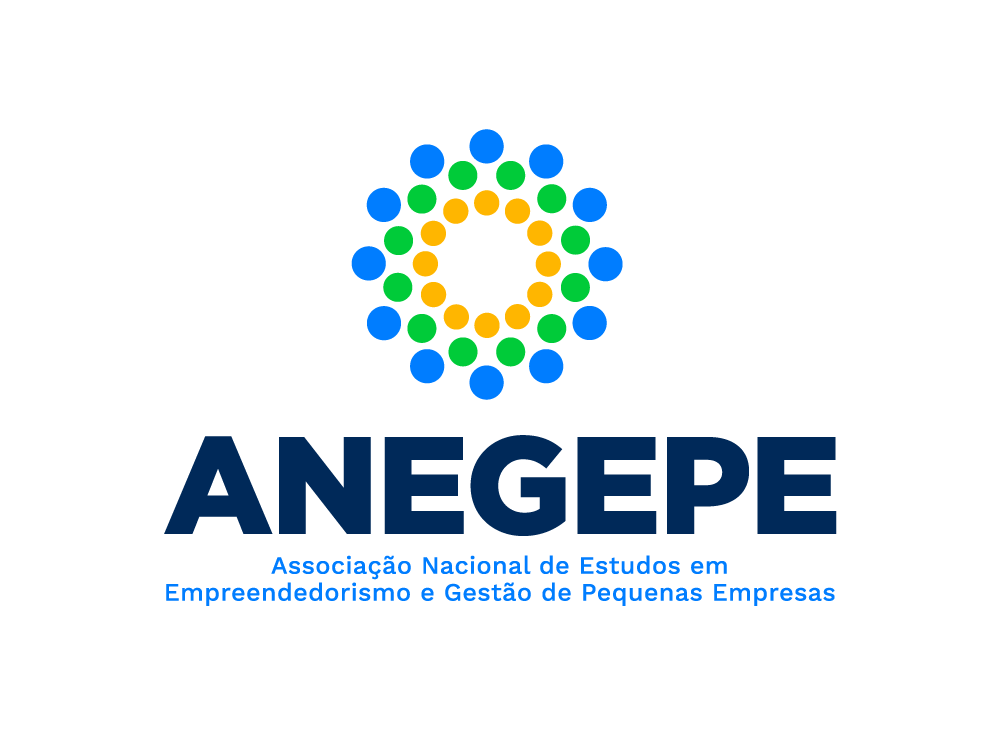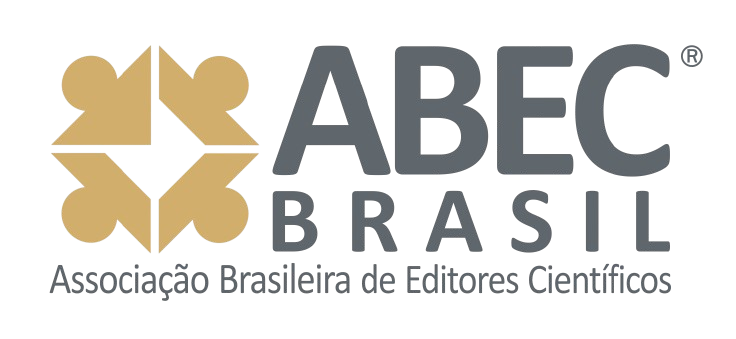Stakeholder Prioritization in Family Businesses: A Theoretical Essay
DOI:
10.14211/regepe.v9i3.1532Keywords:
Stakeholders, Stakeholders Salience, Family FirmsAbstract
Purpose: to identify the factors that influence the stakeholders management in family firms.
Methodology: a theoretical essay was developed based on the “stakeholder salience model”, which addresses prioritization criteria, and the “three circle model”, which presents the intersections between family, business, and ownership peculiar to family firms.
Findings: the results show the salience of three internal stakeholders groups in Family firms (founders, next generation members and non-family employees) based on the attributes of power, legitimacy and urgency, and considering the simultaneity of the stakeholder roles in Family business.
Theoretical contributions: the study contributes for stakeholder management and prioritization by considering similarities and differences between family and non-family businesses and including the “role simultaneity” as an important factor in this phenomenon.
Originality/Value: the inclusion of the “role simultaneity” attribute is relevant to the advancement of the “stakeholder theory” in the context of family businesses, because it offers greater scope and precision to the Salience Model and the study fosters the discussion on how to allocate organizational resources in the face of various stakeholders demands.
Downloads
References
Agle, B. R., Mitchell, R. K., & Sonnenfeld, J. A. (1999). Who matters to Ceos? An investigation of stakeholder attributes and salience, corporate performance, and Ceo values. Academy of management journal, 42(5), 507-525. https://doi.org/10.2307/256973 DOI: https://doi.org/10.2307/256973
Aldrich, H. E., & Cliff, J. E. (2003). The pervasive effects of family on entrepreneurship: Toward a family embeddedness perspective. Journal of business venturing, 18(5), 573-596. https://doi.org/10.1016/S0883-9026(03)00011-9 DOI: https://doi.org/10.1016/S0883-9026(03)00011-9
Anderson, R. C., & Reeb, D. M. (2003). Founding‐family ownership and firm performance: evidence from the S&P 500. The journal of finance, 58(3), 1301-1328. https://doi.org/10.1111/1540-6261.00567 DOI: https://doi.org/10.1111/1540-6261.00567
Andrade, L. P., Cappelle, M. C. A., Campos, R. C., & Brito, M. J. (2018). “Meu Pai Ainda Está Aqui, nas Pessoas”: Sentidos Subjetivos Nas Relações de Trabalho em uma Empresa Familiar. Regepe, 7(2), 145-169. https://doi.org/10.14211/regepe.v7i2.707 DOI: https://doi.org/10.14211/regepe.v7i2.707
Arrègle, J.-L., Hitt, M., Sirmon, D., & Véry, P. (2007). The development of organizational social capital: Attributes of family firms. Journal of Management Studies, 44(1), 73-95. https://doi.org/10.1111/j.1467-6486.2007.00665.x DOI: https://doi.org/10.1111/j.1467-6486.2007.00665.x
Astrachan, J. H. (2010). Strategy in family business: Toward a multidimensional research agenda. Journal of Family Business Strategy, 1(1), 6-14. https://doi.org/10.1016/j.jfbs.2010.02.001 DOI: https://doi.org/10.1016/j.jfbs.2010.02.001
Atz, V.; Rese, N. (2013). Identificação de elementos culturais na aquisição de uma empresa familiar por um fundo de private equity: um estudo de caso. Regepe, 2(2), 73-91. http://dx.doi.org/10.14211/regepe.v2i2.79 DOI: https://doi.org/10.14211/regepe.v2i2.79
Bammens, Y., Voordeckers, W., & Van Gils, A. (2011). Boards of directors in family businesses: A literature review and research agenda. International Journal of Management Reviews, 13(2), 134-152. https://doi.org/10.1111/j.1468-2370.2010.00289.x DOI: https://doi.org/10.1111/j.1468-2370.2010.00289.x
Berrone, P., Cruz, C., & Gomez-Mejia, L. R. (2012). Socioemotional wealth in family firms: Theoretical dimensions, assessment approaches, and agenda for future research. Family Business Review, 25(3), 258-279. https://doi.org/10.1177/0894486511435355 DOI: https://doi.org/10.1177/0894486511435355
Bhalla, V., Orglmeister, C., & Tong, D. (2016). What makes family businesses in emerging markets so different? BCG Perspectives. Recuperado de https://on.bcg.com/2om1PKi
Bingham, J. B., Dyer, W. G., Smith, I., & Adams, G. L. (2011). A stakeholder identity orientation approach to corporate social performance in family firms. Journal of business ethics, 99(4), 565-585. https://doi.org/10.1007/s10551-010-0669-9 DOI: https://doi.org/10.1007/s10551-010-0669-9
Boaventura, J. M. G., Fontes, L. G. P., Sarturi, G., & Armando, E. (2017). Critérios para Identificação da Saliência de Stakeholders através da Análise de Conteúdo. Future Studies Research Journal: Trends and Strategies, 9(2), 3-29. DOI: https://doi.org/10.24023/FutureJournal/2175-5825/2017.v9i2.261
Boers, B. & Ljungkvist, T. (2019). A founder's heritage: the development of organizational identity. Journal of Small Business & Entrepreneurship, 31(1), 73-95. https://doi.org/10.1080/08276331.2018.1466849 DOI: https://doi.org/10.1080/08276331.2018.1466849
Borges, A. F., Brito, M. J. D., Lima, J. B. D., & Castro, C. L. D. C. (2016). Empreendedorismo em empresas familiares: a pesquisa atual e os desafios futuros. RAM – Revista de Administração Mackenzie, 17(2), 93-121. DOI: https://doi.org/10.1590/1678-69712016/administracao.v17n2p93-121
Brickson, S. L. (2007). Organizational identity orientation: The genesis of the role of the firm and distinct forms of social value. Academy of Management Review, 32(3), 864-888. https://doi.org/10.5465/amr.2007.25275679 DOI: https://doi.org/10.5465/amr.2007.25275679
Cennamo, C., Berrone, P., Cruz, C., & Gomez-Mejia, L. R. (2012). Socioemotional wealth and proactive stakeholder engagement: Why family–controlled firms care more about their stakeholders. Entrepreneurship Theory and Practice, 36(6), 1153-1173. https://doi.org/10.1111/j.1540-6520.2012.00543.x DOI: https://doi.org/10.1111/j.1540-6520.2012.00543.x
Chrisman, J. J., Chua, J. H., Pearson, A. W., & Barnett, T. (2012). Family involvement, family influence, and family‐centered non‐economic goals in small firms. Entrepreneurship theory and practice, 36(2), 267-293. https://doi.org/10.1111/j.1540-6520.2010.00407.x DOI: https://doi.org/10.1111/j.1540-6520.2010.00407.x
Chrisman, J. J., Chua, J. H., & Sharma, P. (2005). Trends and directions in the development of a strategic management theory of the family firm. Entrepreneurship Theory and Practice, 29(5), 555-576. https://doi.org/10.1111/j.1540-6520.2005.00098.x DOI: https://doi.org/10.1111/j.1540-6520.2005.00098.x
Chrisman, J. J., Steier, L. P., & Chua, J. H. (2006). Personalism, particularism, and the competitive behaviors and advantages of family firms: An introduction. Entrepreneurship Theory and Practice, 30(6), 719-729. https://doi.org/10.1111/j.1540-6520.2006.00146.x DOI: https://doi.org/10.1111/j.1540-6520.2006.00146.x
Chua, J. H., Chrisman, J. J., & Sharma, P. (1999). Defining the family business by behavior. Entrepreneurship theory and practice, 23(4), 19-39. https://doi.org/10.1177/104225879902300402 DOI: https://doi.org/10.1177/104225879902300402
Clarkson, M. E. (1995). A stakeholder framework for analyzing and evaluating corporate social performance. Academy of management review, 20(1), 92-117. https://doi.org/10.5465/amr.1995.9503271994 DOI: https://doi.org/10.5465/amr.1995.9503271994
Conte, F., Siano, A., & Vollero, A. (2017). CEO communication: engagement, longevity and founder centrality: an exploratory study in Italy. Corporate Communications: An International Journal, 22(3), 273-291. https://doi.org/10.1108/CCIJ-10-2015-0062 DOI: https://doi.org/10.1108/CCIJ-10-2015-0062
Debicki, B. J., Kellermanns, F. W., Chrisman, J. J., Pearson, A. W., & Spencer, B. A. (2016). Development of a socioemotional wealth importance (SEWi) scale for family firm research. Journal of Family Business Strategy, 7(1), 47-57. https://doi.org/10.1016/j.jfbs.2016.01.002 DOI: https://doi.org/10.1016/j.jfbs.2016.01.002
Dawson, A., & Mussolino, D. (2014). Exploring what makes family firms different: Discrete or overlapping constructs in the literature? Journal of Family Business Strategy, 5(2), 169-183. https://doi.org/10.1016/j.jfbs.2013.11.004 DOI: https://doi.org/10.1016/j.jfbs.2013.11.004
Dawson, A., Paeglis, I., & Basu, N. (2018). Founder as Steward or Agent? A Study of Founder Ownership and Firm Value. Entrepreneurship Theory and Practice, 42(6), 886-910. https://doi.org/10.1177/1042258717725522 DOI: https://doi.org/10.1177/1042258717725522
Eesley, C., & Lenox, M. J. (2006). Firm responses to secondary stakeholder action. Strategic Management Journal, 27(8), 765-781. https://doi.org/10.1002/smj.536 DOI: https://doi.org/10.1002/smj.536
Etzioni, A. (1964). Modem organizations. Englewood Cliffs, NJ: Prentice Hall.
Freeman, R. E. (1984). Strategic Management: a stakeholder approach. Boston: Pitman.
Frezatti, F., Bido, D. de S., Mucci, D. M., & Beck, F. (2017). Estágios do ciclo de vida e perfil de empresas familiares brasileiras. era – Revista de Administração de Empresas, 57(6), 601-619. DOI: https://doi.org/10.1590/s0034-759020170607
Gavana, G., Gottardo, P., & Moisello, A. (2016). Sustainability reporting in family firms: A panel data analysis. Sustainability, 9(1), 38. https://doi.org/10.3390/su9010038 DOI: https://doi.org/10.3390/su9010038
Gomez-Mejia, L. R., Cruz, C., Berrone, P., & Castro, J. (2011). The bind that ties: Socioemotional wealth preservation in family firms. Academy of Management Annals, 5(1), 653-707. https://doi.org/10.5465/19416520.2011.593320 DOI: https://doi.org/10.5465/19416520.2011.593320
Gomez-Mejia, L. R., Haynes, K. T., Núñez-Nickel, M., Jacobson, K. J., & Moyano-Fuentes, J. (2007). Socioemotional wealth and business risks in family-controlled firms: Evidence from Spanish olive oil mills. Administrative science quarterly, 52(1), 106-137. https://doi.org/10.2189/asqu.52.1.106 DOI: https://doi.org/10.2189/asqu.52.1.106
Harrison, J. S., Bosse, D. A., & Phillips, R. A. (2010). Managing for stakeholders, stakeholder utility functions, and competitive advantage. Strategic management journal, 31(1), 58-74. https://doi.org/10.1002/smj.801 DOI: https://doi.org/10.1002/smj.801
Harrison, J. S., & John, C. H. (1996). Managing and partnering with external stakeholders. Academy of Management Perspectives, 10(2), 46-60. https://doi.org/10.5465/ame.1996.9606161554 DOI: https://doi.org/10.5465/ame.1996.9606161554
Holt, D. T., Pearson, A. W., Carr, J. C., & Barnett, T. (2017). Family firm(s) outcomes model: Structuring financial and nonfinancial outcomes across the family and firm. Family Business Review, 30(2), 182-202. https://doi.org/:10.1177/0894486516680930 DOI: https://doi.org/10.1177/0894486516680930
Hou, T. C. T. (2019). The relationship between corporate social responsibility and sustainable financial performance: Firm‐level evidence from Taiwan. Corporate Social Responsibility and Environmental Management, 26(1), 19-28. https://doi-org.ez47.periodicos.capes.gov.br/10.1002/csr.1647 DOI: https://doi.org/10.1002/csr.1647
Lescura, C., Brito, M. J., Borges, A. F., & Cappelle, M. C.A. (2012). Representações sociais sobre as relações de parentesco: estudo de caso em um grupo empresarial familiar. RAC – Revista de Administração Contemporânea, 16(1), 98-117.https://doi.org/10.1590/S1415-65552012000100007 DOI: https://doi.org/10.1590/S1415-65552012000100007
Lubatkin, M. H., Schulze, W. S., Ling, Y., & Dino, R. N. (2005). The effects of parental altruism on the governance of family managed firms. Journal of Organizational Behavior, 26(3), 313-330. https://doi.org/10.1002/job.307 DOI: https://doi.org/10.1002/job.307
Magness, V. (2008). Who are the stakeholders now? An empirical examination of the Mitchell, Agle, and Wood theory of stakeholder salience. Journal of business ethics, 83(2), 177-192. https://doi.org/10.1007/s10551-007-9610-2 DOI: https://doi.org/10.1007/s10551-007-9610-2
Meneghetti, F. K. (2011). O que é um ensaio-teórico? Revista de Administração Contemporânea, 15(2), 320-332.
https://doi.org/10.1590/S1415-65552011000200010 DOI: https://doi.org/10.1590/S1415-65552011000200010
Micelotta, E. R., & Raynard, M. (2011). Concealing of revealing the family? Corporate brand identity strategies in family firms. Family Business Review, 24(3), 197-216. https://doi.org/10.1177/0894486511407321 DOI: https://doi.org/10.1177/0894486511407321
Miller, D., & Le Breton-Miller, I. (2014). Deconstructing socioemotional wealth. Entrepreneurship Theory and Practice, 38(4), 713-720. https://doi.org/10.1111/etap.12111 DOI: https://doi.org/10.1111/etap.12111
Miller, D., Le Breton-Miller, I., & Scholnick, B. (2008). Stewardship vs. stagnation: An empirical comparison of small family and non-family businesses. Journal of Management Studies, 45(1), 50-78. https://doi.org/10.1111/j.1467-6486.2007.00718.x DOI: https://doi.org/10.1111/j.1467-6486.2007.00718.x
Mitchell, R. K., Agle, B. R., & Wood, D. J. (1997). Toward a theory of stakeholder identification and salience: Defining the principle of who and what really counts. Academy of management review, 22(4), 853-886. https://doi.org/10.5465/amr.1997.9711022105 DOI: https://doi.org/10.5465/amr.1997.9711022105
Mitchell, R. K., Agle, B. R., Chrisman, J. J., & Spence, L. J. (2011). Toward a theory of stakeholder salience in family firms. Business Ethics Quarterly, 21(2), 235-255. https://doi.org/10.5840/beq201121215 DOI: https://doi.org/10.5840/beq201121215
Neubaum, D. O., Dibrell, C., & Craig, J. B. (2012). Balancing natural environmental concerns of internal and external stakeholders in family and non-family businesses. Journal of Family Business Strategy, 3(1), 28-37. https://doi.org/10.1016/j.jfbs.2012.01.003 DOI: https://doi.org/10.1016/j.jfbs.2012.01.003
Parent, M. M., & Deephouse, D. L. (2007). A case study of stakeholder identification and prioritization by managers. Journal of business ethics, 75(1), 1-23. https://doi.org/10.1007/s10551-007-9533-y DOI: https://doi.org/10.1007/s10551-007-9533-y
Payne, G. T., Brigham, K. H., Broberg, J. C., Moss, T. W., & Short, J. C. (2011). Organizational virtue orientation and family firms. Business Ethics Quarterly, 21(2), 257-285. https://doi.org/10.5840/beq201121216 DOI: https://doi.org/10.5840/beq201121216
Piszczek, M. M., Dearmond, S., & Feinauer, D. (2018). Employee work-to-family role boundary management in the family business. Community, Work & Family, 21(2), 111-132. https://doi.org/10.1080/13668803.2017.1366297 DOI: https://doi.org/10.1080/13668803.2017.1366297
Phillips, R. (2003). Stakeholder theory and organizational ethics. San Francisco, Califórnia: Berrett-Koehler Publishers.
Phillips, R., Freeman, R. E., & Wicks, A. C. (2003). What stakeholder theory is not. Business ethics quarterly, 13(4), 479-502. https://doi.org/10.5840/beq200313434 DOI: https://doi.org/10.5840/beq200313434
Reynolds, S. J., Owens, B. P., & Rubenstein, A. L. (2012). Moral stress: Considering the nature and effects of managerial moral uncertainty. Journal of Business Ethics, 106(4), 491-502. https://doi.org/10.1007/s10551-011-1013-8 DOI: https://doi.org/10.1007/s10551-011-1013-8
Santos, W. R., & Carneiro, T. C. J. (2013). Inovação e desempenho organizacional: um estudo das publicações científicas da base Web of Knowledge. Revista Pensamento Contemporâneo em Administração, 7(4), 58-76. DOI: https://doi.org/10.12712/rpca.v7i4.271
Sarturi, G., de Mascena, K. M. C., Boaventura, J. M. G., & Pilli, L. E. (2018). Relação entre Saliência de Stakeholders e Desempenho Financeiro. Revista Contabilidade, Gestão e Governança, 21(2), 214-230. http://dx.doi.org/10.21714/1984-3925_2018v21n2a4 DOI: https://doi.org/10.21714/1984-3925_2018v21n2a4
Schulze, W. S., Lubatkin, M. H., Dino, R. N., & Buchholtz, A. K. (2001). Agency relationships in family firms: Theory and evidence. Organization Science, 12(2), 99-116. https://doi.org/10.1287/orsc.12.2.99.10114 DOI: https://doi.org/10.1287/orsc.12.2.99.10114
Singh, S., & Mittal, S. (2019). Analysis of drivers of CSR practices’ implementation among family firms in India: A stakeholder’s perspective. International Journal of Organizational Analysis, 27(4), 947-971. https://doi.org/10.1108/IJOA-09-2018-1536 DOI: https://doi.org/10.1108/IJOA-09-2018-1536
Sharma, P. (2002, August). Stakeholder mapping technique: Toward the development of a family firm typology. In Meeting of the Academy of Management, Denver, Colorado, EUA, 62.
Sharma, P. (2004). An overview of the field of family business studies: Current status and directions for the future. Family business review, 17(1), 1-36. https://doi.org/10.1111/j.1741-6248.2004.00001.x DOI: https://doi.org/10.1111/j.1741-6248.2004.00001.x
Sharma, P., & Sharma, S. (2011). Drivers of proactive environmental strategy in family firms. Business Ethics Quarterly, 21(2), 309-334. https://doi.org/10.5840/beq201121218 DOI: https://doi.org/10.5840/beq201121218
Suchman, M. C. (1995). Managing legitimacy: Strategic and institutional approaches. Academy of management review, 20(3), 571-610. https://doi.org/10.5465/amr.1995.9508080331 DOI: https://doi.org/10.5465/amr.1995.9508080331
Tagiuri, R., & Davis, J. (1996). Bivalent attributes of the family firm. Family business review, 9(2), 199-208. https://doi.org/10.1111/j.1741-6248.1996.00199.x DOI: https://doi.org/10.1111/j.1741-6248.1996.00199.x
Zellweger, T. M., & Nason, R. S. (2008). A stakeholder perspective on family firm performance. Family Business Review, 21(3), 203-216. https://doi.org/10.1177/08944865080210030103 DOI: https://doi.org/10.1177/08944865080210030103
Downloads
Published
Métricas
Visualizações do artigo: 1073 PDF (Português (Brasil)) downloads: 409 PDF downloads: 388
How to Cite
Issue
Section
License
Authors who publish in this journal agree to the following terms:
-
The author(s) authorize the publication of the text in the journal;
-
The journal is not responsible for the opinions, ideas, and concepts expressed in the texts, as they are the sole responsibility of their authors;
-
Authors retain copyright and grant the journal the right of first publication, with the work published under the CC BY 4.0
License, which allows sharing the work with acknowledgment of authorship and initial publication in this journal;
-
Authors are allowed and encouraged to post their work (Submitted version, Accepted version [Manuscript accepted by the author], or Published version [Record version]) online, for example in institutional repositories or preprints, as it can lead to productive exchanges as well as earlier and greater citation of published work. REGEPE requires that authors indicate/link the published article with DOI. See the Effect of Open Access.















